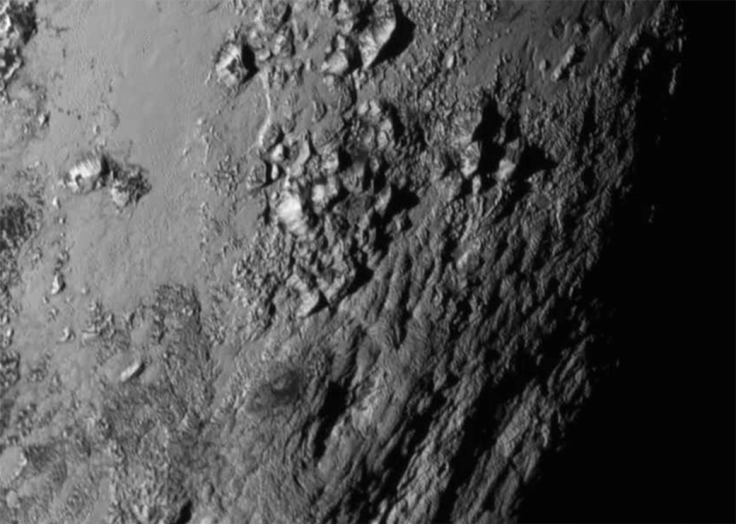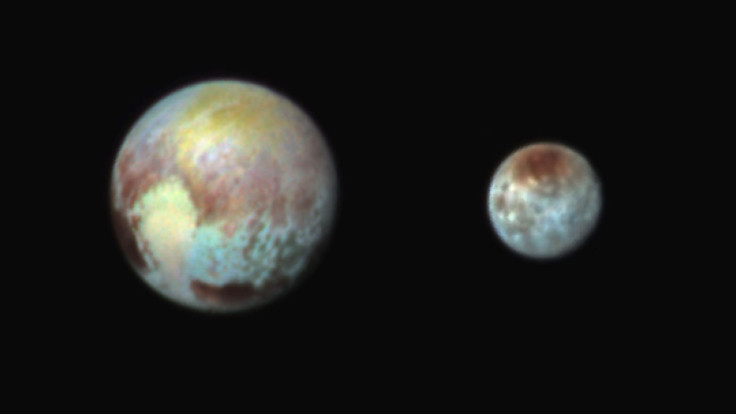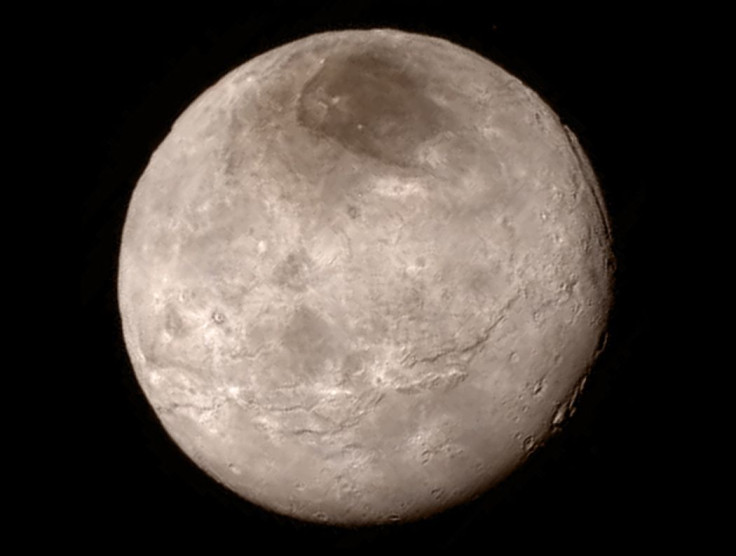Pluto Flyby First Photos: Icy Mountains, Charon, Hydra And More From NASA New Horizons Close Approach

That breeze you felt around 9 p.m. EDT Tuesday was NASA and the New Horizons team letting out a collective sigh of relief. The spacecraft "phoned home" to Earth as expected Tuesday night after completing its historic flyby of Pluto earlier that day. New Horizons was busy collecting data as it was traveling at 30,800 miles per hour past the dwarf planet. While the world celebrated the accomplishment yesterday, the first photos from the notable event have been delivered.
New Horizons was traveling at such fast speeds that even an encounter with a space pebble could have had huge implications for the mission. Luckily, things went smoothly and the spacecraft beamed back a 15 minute status update just like it was programmed to do after the Pluto flyby.
Pluto just had its first visitor! Thanks @NASA - it's a great day for discovery and American leadership. pic.twitter.com/FfztBSMbK0
— President Obama (@POTUS) July 15, 2015"While this historic event is still unfolding -- with the most exciting Pluto science still ahead of us -- a new era of solar system exploration is just beginning. NASA missions will unravel the mysteries of Mars, Jupiter, Europa and worlds around other suns in the coming years," John Grunsfeld, associate administrator of NASA's Science Mission Directorate, said in a statement.
Original: http://imgur.com/gallery/1xm5TW5If there are any other sciency topics you'd like to see a comic about, let me know! I love suggestions!New Horizons has already delivered amazing images of Pluto and Charon ahead of Tuesday's flyby. Observations from New Horizons determined the size of Pluto, and the dwarf planet is now the biggest object in the Kuiper Belt.

The last image beamed back to Earth from Monday at a distance of 476,000 miles away revealed some interesting surface features and a great look at the dwarf planet's "heart." Another photo taken by the spacecraft's "Ralph" instrument revealed the complex surface composition of Pluto and Charon. These photos will help determine the composition of the ice on the two objects and the age of surface features, such as craters and chasms. Charon's dark north pole cap is due to hydrocarbons and tholins -- complex compounds that give Charon, Pluto and other icy bodies a red hue.
You ain't seen nothing yet! Tomorrow, @NASANewHorizons #PlutoFlyby images will have even greater detail. Stay tuned! https://t.co/t7HjayxYR0
— NASA (@NASA) July 15, 2015Alan Stern, principal investigator of the New Horizons mission, revealed Charon is active, and there are mountains in the Kuiper Belt. The spacecraft also revealed the first image of Hydra, which is made up mostly of water-ice.

Infrared spectrum observations revealed methane on Pluto, and that's just the beginning of the science that will be conducted for the next decade.

Charon, Pluto's largest moon, was revealed in stunning detail. "Mordor," the dark area near the pole as dubbed by Cathy Olkin, Deputy Project Scientist, was one highlight. Charon is a moon covered in deep canyons.
The heart that has dominated Pluto has also received a new nickname in honor of the dwarf planet's discoverer -- Tombaugh Regio. Pluto is an icy world that has mountains. "This may cause us to rethink what powers geological activity on many other icy worlds," John Spencer, New Horizons' Geology, Geophysics and Imaging deputy team leader, from the Southwest Research Institute, said in a statement. The icy mountains may have formed around 100 million years ago. Further research could reveal possible ice volcanoes on Pluto.
Zoom into Pluto & discover mountains, seen during yesterday's @NASANewHorizons #PlutoFlyby: http://t.co/6QLXLxiW0o https://t.co/toJQ0j7wB6
— NASA (@NASA) July 15, 2015New Horizons is now a million miles from Pluto, Stern said, and will continue delivering data for the next 16 months.
© Copyright IBTimes 2024. All rights reserved.











